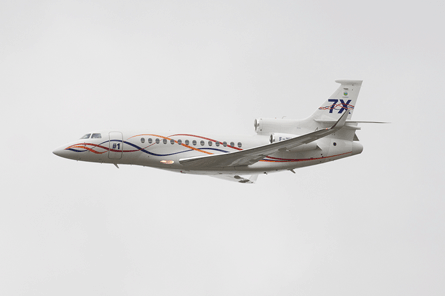Dassault Aviation is still proceeding with caution over the re-entry into passenger service of its Falcon 7X business jet.
This is despite Dassault's confidence its ongoing investigation into the pitch trim fault that grounded the 7X fleet will eliminate any remaining uncertainties.
On 25 May, a Dassault Aviation Falcon 7X on a flight from Germany to Kuala Lumpur suffered a brief pitch trim runaway during the descent toward its destination. The horizontal stabiliser began, uncommanded, to move in the pitch-up sense, and the aircraft began to climb. Dassault's senior vice-president civil aircraft Olivier Villa said the primary safety system that should have prevented this failed to do so, but quite quickly the secondary one did. The pilots landed the aircraft safely.
 |
|---|
The European Aviation Safety Agency's current airworthiness directive (AD) on the 7X issue says: "The initial results of the investigations are showing that there was a production defect in the horizontal stabiliser electronic control unit which could have contributed to the cause of the event. There are two different HSECU in use [in the 7X fleet]: Part Number 051244-02 is not affected by this production defect, and P/N 051244-04 is potentially affected by this production defect. The aeroplane that experienced the uncontrolled pitch trim runaway event was equipped with a P/N 051244-04 HSECU."
Villa said there are about 80 aircraft with the -02 HSECU, and 32 with the newer but "defective" -04. The -02 aircraft are cleared to resume flying within a restricted flight envelope following application of Dassault's approved system modification, while the -04 aircraft remain grounded for now.
Obtaining confirmation of this defect as the sole cause is the key to what happens next.
If the HSECU defect is confirmed as the sole cause, once all aircraft have received the approved modification they will be cleared back into service with no flight envelope restrictions.
- All the latest news, images and video from the 2011 Paris air show
Source: Flight Daily News























